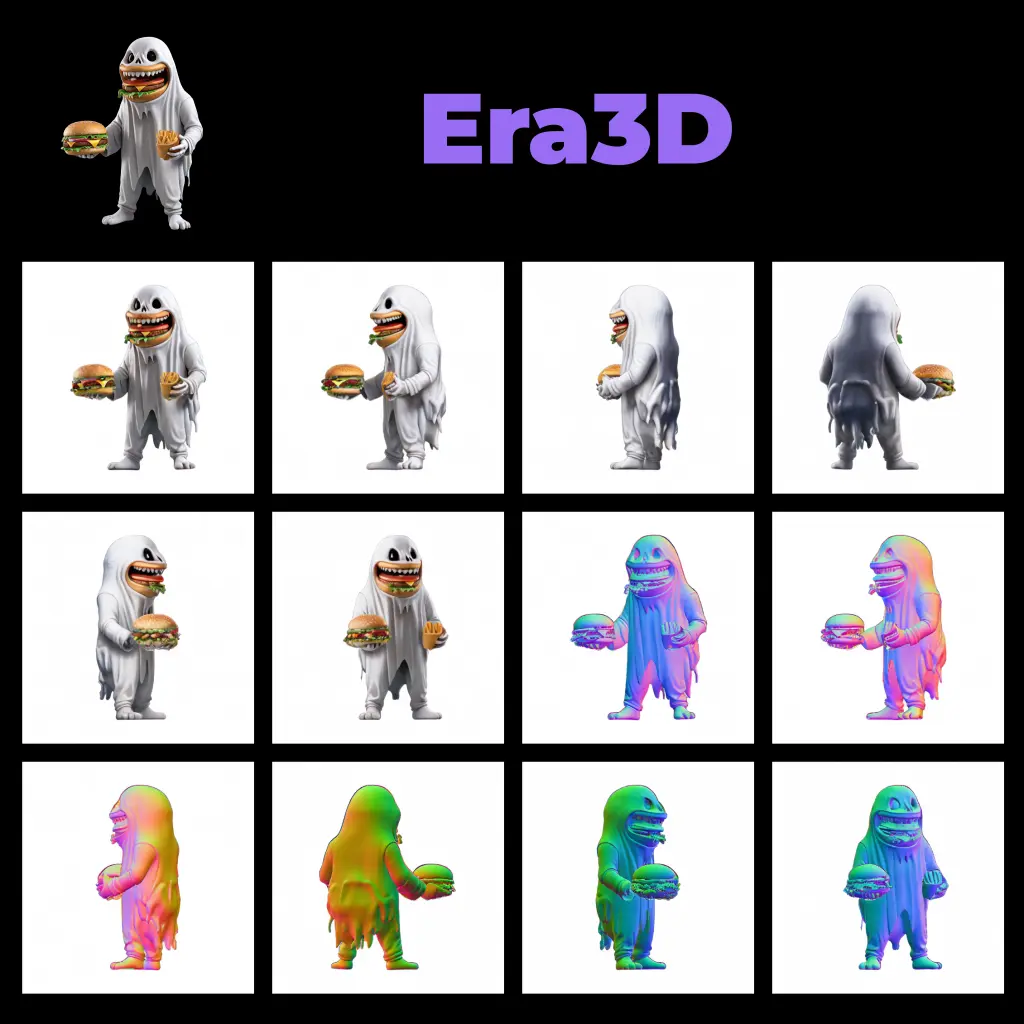ComfyUI Node: 🔶 Text Prompt Clip Endcode +Lora
chaosaiart_TextCLIPEncode_lora
Category🔶Chaosaiart/prompt
chaosaiart (Account age: 618days) Extension
Chaosaiart-Nodes Latest Updated
2025-01-31 Github Stars
0.1K
How to Install Chaosaiart-Nodes
Install this extension via the ComfyUI Manager by searching for Chaosaiart-Nodes- 1. Click the Manager button in the main menu
- 2. Select Custom Nodes Manager button
- 3. Enter Chaosaiart-Nodes in the search bar
Visit ComfyUI Online for ready-to-use ComfyUI environment
- Free trial available
- 16GB VRAM to 80GB VRAM GPU machines
- 400+ preloaded models/nodes
- Freedom to upload custom models/nodes
- 200+ ready-to-run workflows
- 100% private workspace with up to 200GB storage
- Dedicated Support
🔶 Text Prompt Clip Endcode +Lora Description
Enhance AI art generation by encoding prompts with CLIP and LoRA models for precise artistic control.
🔶 Text Prompt Clip Endcode +Lora:
The chaosaiart_TextCLIPEncode_lora node is designed to enhance your AI art generation process by encoding textual prompts into conditioning data using the CLIP model, with the added capability of incorporating LoRA (Low-Rank Adaptation) models. This node allows you to input both positive and negative textual prompts, which are then processed to influence the AI model's output, ensuring that the generated art aligns closely with your creative vision. By leveraging LoRA models, you can fine-tune the conditioning process, providing more nuanced and precise control over the artistic output. This node is particularly useful for artists looking to experiment with different textual influences and achieve specific artistic styles or themes.
🔶 Text Prompt Clip Endcode +Lora Input Parameters:
model
This parameter represents the AI model that will be used for generating the art. It is essential to select a model that is compatible with the CLIP and LoRA processes to ensure optimal performance and accurate results.
positiv_txt
This is a multiline string input where you can provide the positive textual prompt. The positive prompt is used to guide the AI model towards the desired features and elements in the generated art. For example, if you want the art to have a sunny atmosphere, you might input "bright sunny day with clear skies."
negativ_txt
This is a multiline string input where you can provide the negative textual prompt. The negative prompt helps the AI model avoid certain features or elements in the generated art. For instance, if you want to avoid dark and gloomy elements, you might input "no dark clouds or rain."
clip
This parameter represents the CLIP model used for encoding the textual prompts. The CLIP model is responsible for converting the textual descriptions into conditioning data that the AI model can understand and use to influence the art generation process.
lora
This parameter allows you to input a LoRA model, which can be used to fine-tune the conditioning process. The LoRA model provides additional control over the influence of the textual prompts, enabling more precise adjustments to the generated art.
🔶 Text Prompt Clip Endcode +Lora Output Parameters:
POSITIV
This output represents the conditioning data generated from the positive textual prompt. It is used by the AI model to incorporate the desired features and elements into the generated art, ensuring that the output aligns with the positive aspects of your prompt.
NEGATIV
This output represents the conditioning data generated from the negative textual prompt. It helps the AI model avoid incorporating unwanted features and elements into the generated art, ensuring that the output aligns with the negative aspects of your prompt.
🔶 Text Prompt Clip Endcode +Lora Usage Tips:
- Experiment with different combinations of positive and negative prompts to achieve the desired artistic effect. For example, use a positive prompt like "vibrant sunset" and a negative prompt like "no dark shadows" to create a bright and colorful scene.
- Utilize the LoRA model to fine-tune the influence of your prompts. Adjust the strength of the LoRA model to see how it affects the generated art and find the optimal settings for your creative vision.
- Make sure to use a compatible AI model that works well with the CLIP and LoRA processes to ensure accurate and high-quality results.
🔶 Text Prompt Clip Endcode +Lora Common Errors and Solutions:
Error: "Error, can't Load Lora: <lora_name>"
- Explanation: This error occurs when the specified LoRA model cannot be loaded. This could be due to the model not existing or being incompatible with the base model.
- Solution: Verify that the LoRA model name is correct and that it exists in the specified directory. Ensure that the base model is compatible with the LoRA model.
Error: "Chaosaiart-Load Lora: no Lora"
- Explanation: This error indicates that no LoRA model was provided or the input was not recognized as a valid LoRA model.
- Solution: Check the input for the LoRA parameter and ensure it is correctly specified. If no LoRA model is needed, you can ignore this error.
Error: "Proof: 1. Lora Exist, 2. Same Base Model as Checkpoint"
- Explanation: This error suggests that there might be an issue with the existence of the LoRA model or its compatibility with the base model.
- Solution: Double-check that the LoRA model exists and is in the correct location. Ensure that the base model used is the same as the one required by the LoRA model.
🔶 Text Prompt Clip Endcode +Lora Related Nodes
RunComfy is the premier ComfyUI platform, offering ComfyUI online environment and services, along with ComfyUI workflows featuring stunning visuals. RunComfy also provides AI Playground, enabling artists to harness the latest AI tools to create incredible art.

